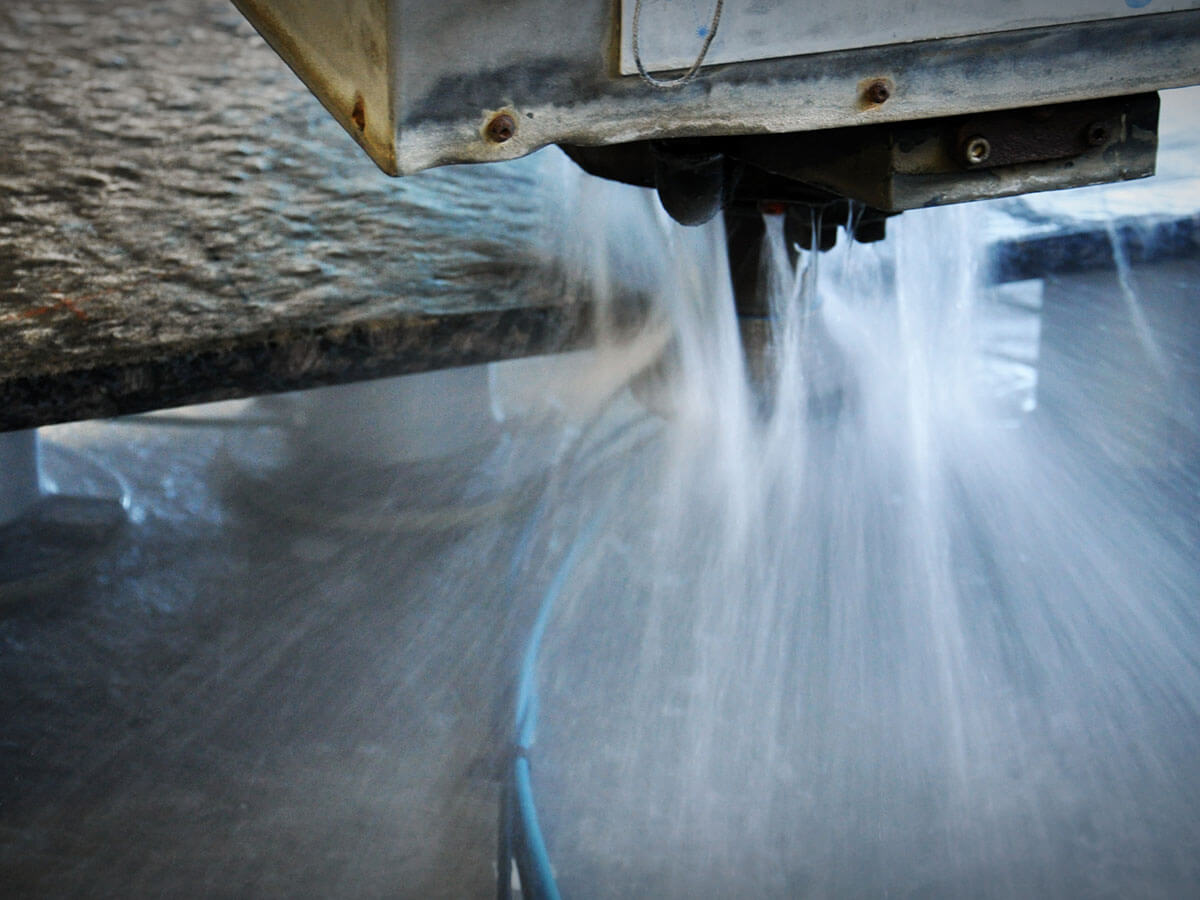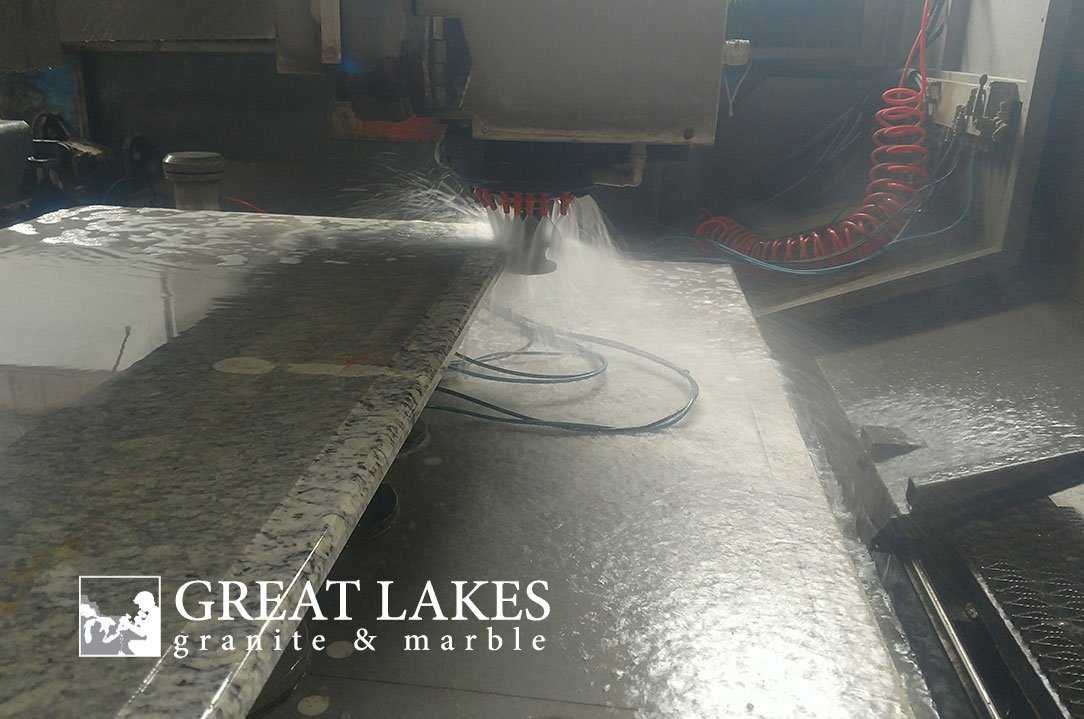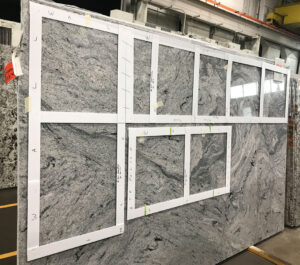Stone Fabrication
The polished beautiful granite countertop that you install in your kitchen or bathroom undergoes an extensive process of stone fabrication to achieve the finished product. It is remarkable just how much occurs during this process and how important it is to getting the most from your countertop for years to come.
This fabrication process is done by a professional stone fabricator, which is a very specialized person. In some cases the granite supplier also specializes in stone fabrication and everything can be done at their shop prior to being delivered to your home. The convenience of one-stop shopping can lead to having more control over the entire process.
In this article, we will explore the steps between slab selection and countertop installation, otherwise known as the fabrication process.




 We highly encourage our customers’ involvement in the templating process. It is our philosophy that every countertop, regardless of the size of the project, should have a template to ensure a beautiful finished product. During this process, decisions will be made as to where your sink and faucet are located, your overhangs, corner radius’ and more. Our templater will visit your home and make a traditional template with coroplast strips. Some fabricators use digital templating tools, we elect not to go this route. After thirty years in the business, we’ve found the traditional template gives us a more accurate representation, allows the customer to see (in their home) what their countertop configuration is going to look like, and gives the customer the ability to see the template on the stone and determine how to lay out countertop configuration on their chosen slab(s).
We highly encourage our customers’ involvement in the templating process. It is our philosophy that every countertop, regardless of the size of the project, should have a template to ensure a beautiful finished product. During this process, decisions will be made as to where your sink and faucet are located, your overhangs, corner radius’ and more. Our templater will visit your home and make a traditional template with coroplast strips. Some fabricators use digital templating tools, we elect not to go this route. After thirty years in the business, we’ve found the traditional template gives us a more accurate representation, allows the customer to see (in their home) what their countertop configuration is going to look like, and gives the customer the ability to see the template on the stone and determine how to lay out countertop configuration on their chosen slab(s).